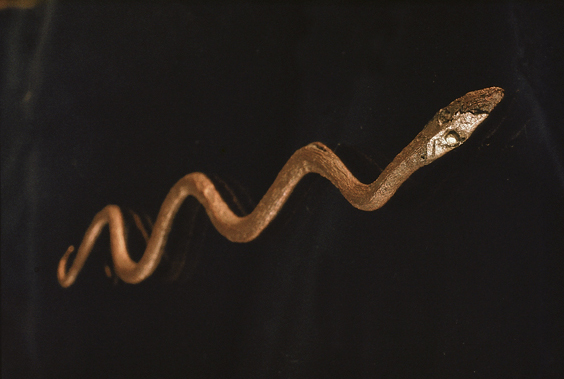Image Details

Beno Rothenberg
Not just snake oil, this 5-inch copper serpent with gilded head, , discovered in a 13th- or 12th-century B.C.E. temple at Timna, near Eilat, recalls the bronze serpent Moses reportedly made as a cure for snakebite. God instructed Moses that the injured could just “look at the bronze serpent and recover” (Numbers 21:9).
Moses’ serpent was ensconced in the Jerusalem Temple and worshiped there until King Hezekiah (715–687 B.C.E.) “broke it into pieces for…the Israelites had burned incense to it” (2 Kings 18:4), apparently with hopes of receiving a cure. Hezekiah’s destruction of the serpent and other cult statues and his attempt to centralize worship in Jerusalem by destroying all outlying shrines signified a shift in therapy. Patients could no longer appeal to cultic deities in the Jerusalem Temple or pray for healing at local shrines. Recognizing the problems this caused for those who lived far from Jerusalem, the advocates of centralization suggested that, “in any plague and in any disease,” the afflicted, by merely “stretching out his hands toward [the Jerusalem Temple],” could be cured (1 Kings 8:37–38).
